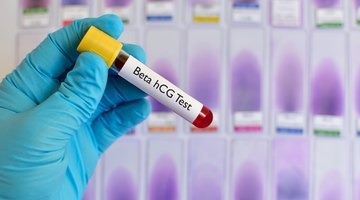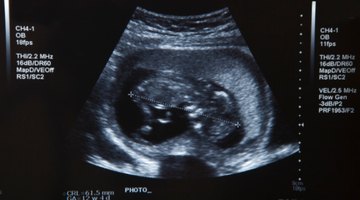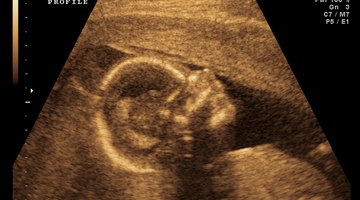Signs of a Healthy Early Pregnancy
Many pregnant women have wished for a window into the uterus, to reassure themselves that their baby-to-be is healthy.
Ultrasound provides such a window and there are several signs of a healthy pregnancy that appear in the first seven weeks of pregnancy on ultrasound. Appropriately rising levels of human chorionic gonadotropin indicate a healthy pregnancy, and early pregnancy symptoms also provide reassurance that the pregnancy is developing normally.
Human Chorionic Gonadoptrion (HCG)
HCG is the hormone produced by the placenta as it implants in the uterus. Home pregnancy tests measure hCG in the urine; blood tests give a more accurate, exact, reading. At four weeks, hCG levels range from 17 to 119 milli-international units per milliliter (mIU/ml); what’s important is not so much the exact number, but whether the number doubles every two to three days.
A doubling hCG level every two to three days occurs in over 85 percent of normal pregnancies, the Advanced Fertility Center of Chicago explains. By the time the hCG level reaches 2,000 mIU/ml, some embryonic development should be seen on transvaginal ultrasound (an ultrasound done vaginally using an ultrasound probe) according to the American Pregnancy Association.
Gestational Sac

How to Have a Successful Pregnancy With Low HCG
Learn More
At the time of her first missed period, a woman is considered to be four weeks pregnant, even though the embryo implanted only a week or so before. When the first pregnancy test reads “positive,” at four weeks, there’s still nothing to be seen on ultrasound.
But within the next week, the first sign of pregnancy can be visualized; by four and a half weeks, the gestational sac, which will hold the developing embryo, is visible. By five to six week weeks, the yolk sac should be visible inside the gestational sac; this provides nutrition to the embryo before the placenta is fully developed.
Fetal Pole
When an embryo first develops, it looks mostly like a small bean, a straight pole that’s slightly curved at the end. The fetal pole first appears by five and a half to six and a half weeks, and is measured from the top to the curve; this is called the crown-rump length. In some pregnancies, no fetal pole develops; the placental tissue grows and hormones that indicate pregnancy are detected in the blood, but there’s no fetus. This is known as a blighted ovum. A fetal pole that has a crown-rump length of 5 mm but no heartbeat is most likely a non-viable pregnancy, but should be checked again in a few days to be sure.
Fetal Heartbeat

Symptoms of Being 4 Weeks Pregnant With Twins
Learn More
When the fetal heartbeat is first visible, the fetal heart is still a one chambered tube. That tiny flicker, which can be seen on ultrasound at six weeks, on average, is an excellent indicator of fetal well-being.
The early fetal heartbeat is slower than it will be once the fetus develops a normal four chambered heart, around 110 beats per minute (BPM). A fetal heart rate (FHR) of less than 90 BPM may indicate a non-viable fetus, obstetrician Joseph Woo states.
Once a healthy fetal heartbeat is seen, the chance of miscarriage drops considerably; 95 percent of pregnancies go on to full term at this point, according to Dr. Woo.
Pregnancy Symptoms
Early pregnancy symptoms usually indicate that a pregnancy is developing normally. Sore breasts, nausea, fatigue and frequent urination are signs that pregnancy hormones such as estrogen and progesterone are being produced.











